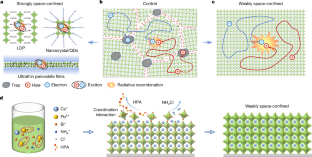2025-06-12 北海道大学

本研究の概略図:カンクウルウ(中央)とその他のユウティラノサウルス類(左、アリオラムス;上、ティラノサウルス;右、ゴルゴサウルス)
<関連情報>
- https://www.hokudai.ac.jp/news/2025/06/post-1917.html
- https://www.hokudai.ac.jp/news/pdf/250612_pr.pdf
- https://www.nature.com/articles/s41586-025-08964-6
モンゴルの新しいティラノサウルス類とエウティラノサウルス類の進化 A new Mongolian tyrannosauroid and the evolution of Eutyrannosauria
Jared T. Voris,Darla K. Zelenitsky,Yoshitsugu Kobayashi,Sean P. Modesto,François Therrien,Hiroki Tsutsumi,Tsogtbaatar Chinzorig & Khishigjav Tsogtbaatar
Nature Published:11 June 2025
DOI:https://doi.org/10.1038/s41586-025-08964-6
Abstract
Eutyrannosaurians were large predatory dinosaurs that dominated Asian and North American terrestrial faunas in latest Cretaceous times. These apex predators arose from smaller-bodied tyrannosauroids during the ‘middle’ Cretaceous that are poorly known owing to the paucity of fossil material1,2,3. Here we report on a new tyrannosauroid, Khankhuuluu mongoliensis gen. et sp. nov., from lower Upper Cretaceous deposits of Mongolia that provides a new perspective on eutyrannosaurian origins and evolution. Phylogenetic analyses recover Khankhuuluu immediately outside Eutyrannosauria and recover the massive, deep-snouted Tyrannosaurini and the smaller, gracile, shallow-snouted Alioramini as highly derived eutyrannosaurian sister clades. Khankhuuluu and the late-diverging Alioramini independently share features related to a shallow skull and gracile build with juvenile eutyrannosaurians, reinforcing the key role heterochrony had in eutyrannosaurian evolution. Although eutyrannosaurians were mainly influenced by peramorphosis or accelerated growth4,5,6,7,8,9,10, Alioramini is revealed as a derived lineage that retained immature features through paedomorphosis and is not a more basal lineage as widely accepted11,12,13,14,15,16,17,18,19. Our results reveal that Asian tyrannosauroids (similar to Khankhuuluu) dispersed to North America, giving rise to Eutyrannosauria in the mid-Late Cretaceous. Eutyrannosauria diversified and remained exclusively in North America until a single dispersal to Asia in the latest Cretaceous that established Alioramini and Tyrannosaurini. Stark morphological differences between Alioramini and Tyrannosaurini probably evolved due to divergent heterochronic trends—paedomorphosis versus peramorphosis, respectively—allowing them to coexist in Asia and occupy different ecological niches.



